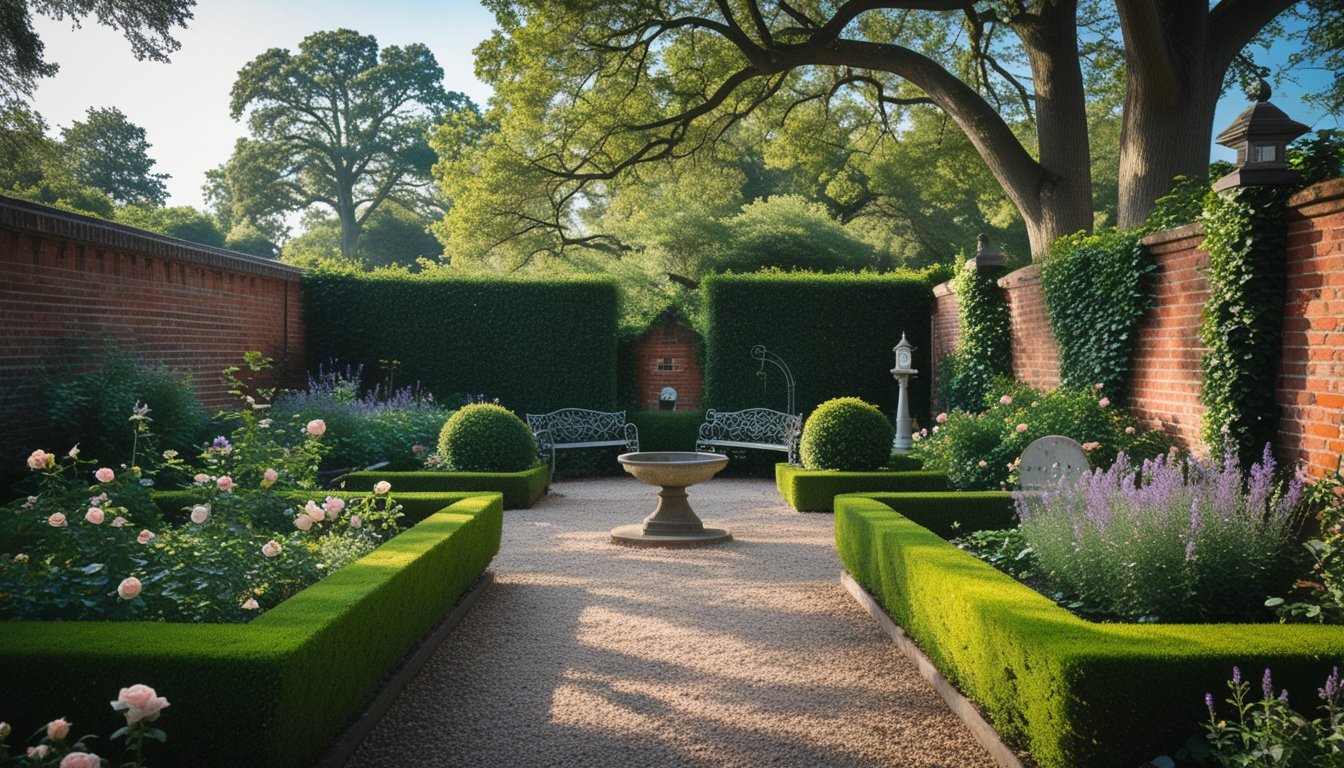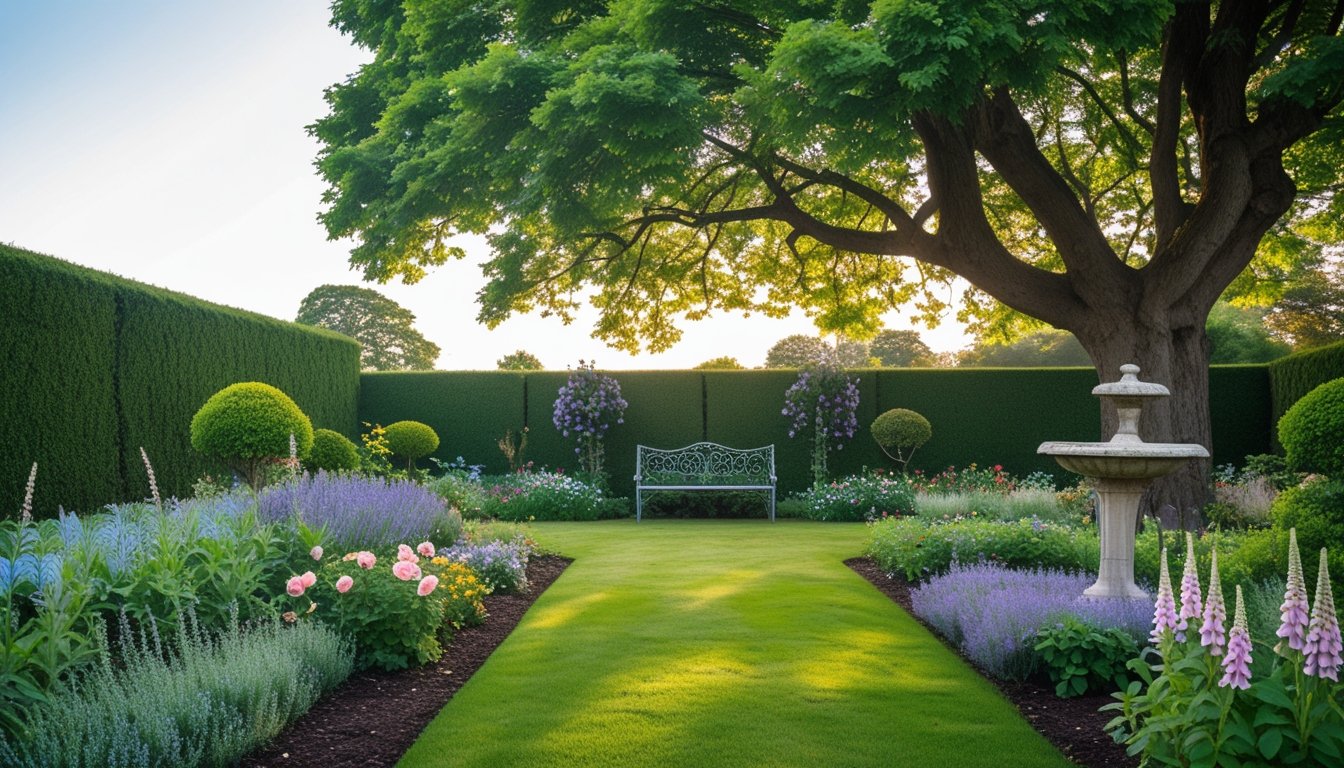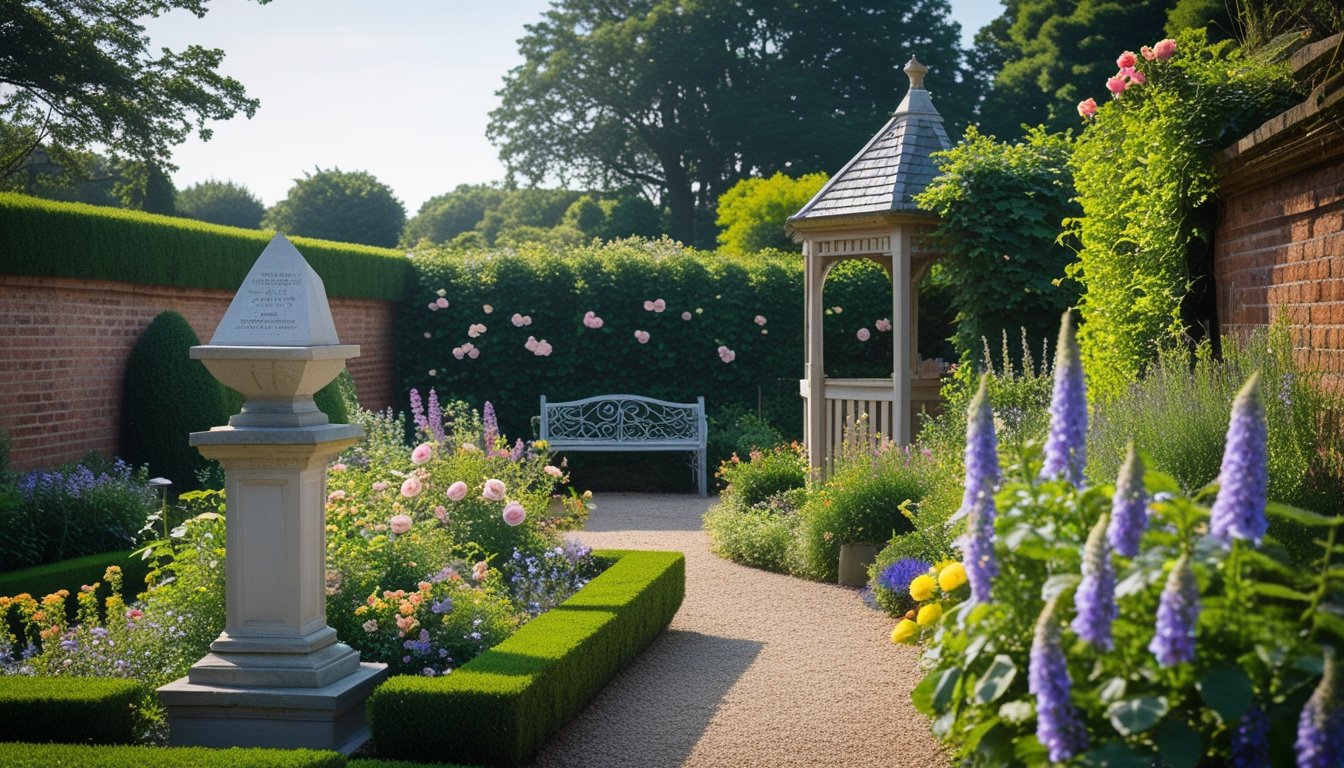Late updated: 16 Jul 2025 14:07
Written by: Oliver Bennett
Exploring Classic British Garden Features: A Timeless Guide to Traditional Design
The charm of classic British gardens is undeniable, with their history deeply rooted in tradition and style. From flowing landscapes to carefully structured topiaries, these gardens offer a serene escape into nature's beauty, combining artistry and horticulture. Classic British garden features seamlessly blend formality and natural beauty into distinctively scenic retreats. This balance makes them fascinating for both gardening enthusiasts and casual admirers alike.

We invite our readers to join us on a journey through the quintessential elements that define these majestic gardens. Iconic elements such as neatly trimmed hedgerows, serene water features, and vibrant flower borders create inviting spaces that tell stories of generations past. The harmonious arrangement of these features captures the essence of British elegance, serving as inspiration for those looking to recreate this timeless style in their own gardens.
The allure of British garden design transcends geographical boundaries, offering inspiration to transform outdoor spaces worldwide. These gardens not only reflect a nation's cultural heritage but also showcase horticultural craftsmanship at its finest. Whether it's the romance of a rose garden or the grandeur of a stately hedge, each element plays a pivotal role in creating a landscape that feels both enduring and inviting.
Key Takeaways
- Classic British gardens blend formality with natural beauty.
- Key features include hedgerows, water features, and flower borders.
- British gardens inspire timeless outdoor design worldwide.
Defining Classic British Garden Features
Classic British gardens are renowned for their unique blend of structured elegance and natural beauty. They are often characterised by historic influences, distinct key characteristics, and a strong emphasis on symmetry and structure.
Key Characteristics of Traditional British Gardens
Traditional British gardens are typically marked by a formal layout, featuring manicured lawns and intricate paths. Hedges, often evergreen, frame neat borders filled with a variety of perennials and roses. These elements collectively form a balanced and harmonious landscape.
Water features such as ponds or small fountains are common, adding both visual interest and a sense of tranquillity. Garden benches positioned strategically allow for quiet reflection and appreciation of nature’s artistry.
Historic Influences on British Garden Design
British garden design has been shaped significantly by historical events and cultural exchanges. The Renaissance brought about the adoption of formal symmetry, influenced heavily by Italian gardens. Later, the introduction of plants from the British Empire expanded the botanical diversity, adding an exotic touch to native landscapes.
The Victorian era ushered in a fascination with collecting rare plant species, which led to the incorporation of conservatories and greenhouses. These structures housed tropical plants, further enriching the traditional British garden palette.
Significance of Structure and Symmetry
Symmetry and structure are central to British gardens, offering a sense of balance and order. Paths and geometric hedges help delineate spaces, forming a cohesive layout that guides visitors naturally through the garden. This structured design contrasts beautifully with the organic forms of flowers and shrubs.
Elements such as terracing and parterres enhance this sense of order. These features allow for a variety of visual perspectives and demonstrate the meticulous planning inherent in classic British garden design. Maintaining symmetry and structure underscores the garden’s formal elegance while ensuring aesthetic appeal.
Signature Elements of British Garden Design

British garden design is renowned for its timeless elegance and meticulous detail. Emphasising structure, texture, and form, these gardens often feature formal hedges, intricate pathways, lush flowerbeds, and calming water features.
Formal Hedges and Topiary
Formal hedges and topiary are foundational to British gardens, offering structure and symmetry. We often observe these elements crafted from hardy species like yew or boxwood. These plants are pruned into precise geometric shapes or elaborate figures, showcasing horticultural artistry.
The practice of shaping plants into intricate designs not only adds visual interest but also provides a sense of order and formality. Regular maintenance is crucial to preserve their shape and health. The evergreen nature of these plants ensures year-round appeal.
Iconic Garden Pathways
Pathways are essential in guiding visitors through a garden and linking various themes and areas. Classic British pathways are typically constructed from gravel, brick, or stone, materials chosen for their durability and compatibility with the surrounding landscape. These materials contrast nicely with lush greenery, enhancing the visual flow of the garden.
Pathways are often flanked by carefully curated plantings or low hedges, which help to define the route. The winding design of many paths mimics nature's own curves, offering surprises and hidden views at every turn. Each pathway's design reflects the garden's overall aesthetic, serving both functional and decorative purposes.
Traditional Borders and Flowerbeds
In British garden design, borders and flowerbeds are used to create bursts of colour and texture. They refer to the arrangement of plants in concentrated areas along paths or walls. Typically packed with perennial plants, these beds are known for their layered planting schemes, which ensure interest and blooms throughout the seasons.
Plants are selected with care to achieve a mix of heights, colours, and textures, thus creating a rich tapestry. The goal is to provide a seamless transition between different garden areas. Delphiniums, foxgloves, and peonies are popular choices that offer both colour and height. The success of traditional borders is reliant on strict colour palettes and complementary plant combinations.
Water Features and Garden Ponds
Water plays a crucial role in British gardens, providing not just aesthetic appeal but also a sense of tranquillity. Ponds and water features come in various forms, ranging from small reflective pools to larger naturalistic ponds. These elements are especially effective in attracting wildlife, contributing to the ecosystem.
Water features are often strategically placed to catch the light or highlight a particular view within the garden. Using natural materials, such as stone, integrates these features harmoniously into the landscape. Pumps and filters are usually hidden to maintain a natural look, ensuring that the presence of water is both soothing and visually pleasing.
Frequently Asked Questions

Our journey through classic British garden features addresses common queries about design elements, plant choices, space management, and integrating modern touches while keeping the traditional aesthetic.
What essential elements should be included in a traditional English garden design?
A traditional English garden typically features lush, informal landscapes with an abundance of flowers. Key elements include hedgerows, winding paths, water features, and a variety of plantings that offer seasonal colour.
How can one create an English garden in a limited space?
Maximising a small area involves using vertical gardening, selecting compact plant varieties, and incorporating features like potted plants and trellises. Clever layout planning ensures a sense of depth and variety.
What are some quintessential plant choices for a classic English garden?
Consider roses, lavender, delphiniums, and foxgloves for their vibrant colours and fragrance. Perennials, alongside herbs like rosemary and thyme, enhance the traditional garden feel.
Could you suggest a basic layout for a small English-inspired garden?
A simple design might include a circular central path surrounded by mixed flower beds. Placing a small bench or a garden statue can add a focal point, while varying heights with climbing plants introduces visual interest.
How can one integrate modern design elements while maintaining an authentic English garden style?
To blend modern styles, select sleek furniture and textured materials that complement traditional plantings. Elements like minimalist stone paths or contemporary water features can provide contrast without overshadowing classic charm.
What are some cost-effective methods to achieve a traditional English garden aesthetic in a front yard?
Utilise native plants for lower maintenance and cost. Use gravel for pathways and local materials for structures. Incorporating DIY projects, such as homemade planters, can further reduce expenses while enhancing authenticity.
